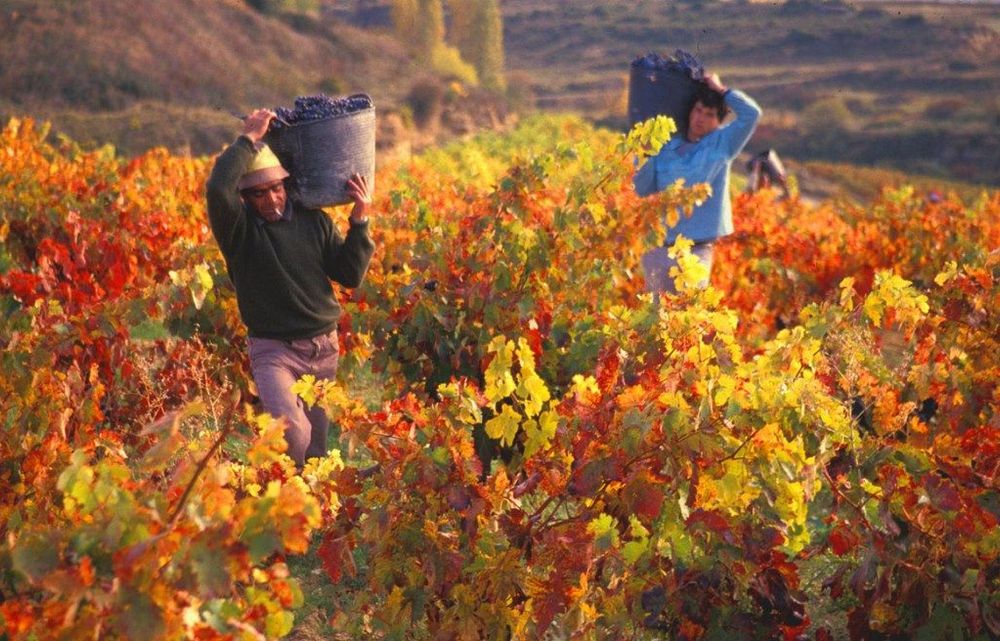The quality of wines being produced on the back of what has been one of Argentina’s most difficult of vintages could pave the way for more fresher, lighter more approachable wines.
The Argentinian 2016 harvest will go down as being one of the memorable in living memory. Memorable not just for the potential of the wines. But memorable in how they were made. Memorable in the conditions many of the wine growers and their vines had to live through, just to be able to produce the wines that they have.
For the 2016 vintage has been different in so many ways. Not all of them good.
For some it has meant going back to their days as oenology students working vintages in wet, cool French regions such as Burgundy and Bordeaux. Producing wines in a way not really normally possible in the long hot days of Argentina.
That is until 2016. It all comes back to the El Nino weather system that has dominated the winemaking conditions not only in Argentina, but across South America and up in to North America and California.
El Nino has been the weather equivalent of the Brexit vote for the UK to leave the European Union. Bringing uncertainty, turbulence and an unpredictability to winemaking in Argentina that growers and producers are simply not used to.
But most of all it has brought rain. And a lot of it. Unprecedented amounts of it. In fact so much rain has fallen in Argentina over the last year that is a wonder it has been able to produce a harvest of any substance at all. Particularly in areas of the key wine growing regions across central and eastern Mendoza.
According to the official Wines of Argentina harvest report there was a 64.3% increase of average rainfall for the 2015-2016 growing period against years going back to 2007-2008. (Government of Mendoza Province).
In all 348.1mm of rain fell in 2015/2016 compared to 224.3mm in 2015.
But what is clear Argentina may have to get used to such conditions in the future as its highest previous year for rainfall was as recently as of 242.5mm in 2013/2014.
In a nutshell it has resulted in a much lower harvest than on average. By May 15 the total crop was 1,744 million kgs compared to a 10-year average of 2,659 m kgs and down 25% from 2,407m kg in 2015. Which is the equivalent of 875m litres versus 1,198 m litres in 2015.
But conversely it has also allowed Argentina and its winemakers to produce wines they have been striving to make more of in recent years. Wines that are fresher, lighter and have that drinkability factor that some of their bigger, bolder, fruit bomb style wines of the past that have polarised both trade and consumers around the world.
Victor Marcantoni, wine director for Pernod Ricard in Argentina told The Buyer that this year’s vintage reminds him of making wine in the early 1990s.
“We importantly still have the skin colour, so we have the fruit forward style but with wines at 13% to 13.5%. That is good news for customers in our export markets,” he says.
Kaiken winemaker, Rogelio Rabino, agreed: “This is all very new for Argentine winemakers. We are having to learn new ways to make wine. But the rain means we are producing wines with much lower alcohol levels and that have great freshness. Winemakers are saying it is more like making a vintage in Bordeaux and we are seeing alcohol levels of 12% and 12.5% which is unheard of in Argentina.”

Argentina’s harvest saw unprecedented levels of rainfall
The opening sentence of Wines of Argentina’s 2016 harvest report sums up the situation perfectly. “2016 was a different year with delayed maturity and fewer grapes, which resulted in wines of greater quality, with more freshness, less alcohol, excellent acidity and remarkable varietal aromas.”
And in its conclusion it goes further and states: “The 2016 harvest was very good. Despite it being a different sort of year with fewer grapes and a delay in maturity, the results were fresher wines with less alcohol, good acidity, notable varietal aromas and excellent colour.”
Region by region
The two areas most badly affected by the weather were Mendoza and Salta. Total production across Mendoza was down 39% and Salta at 35%, but production was also down in most other key wine growing regions including La Rioja (11%), Neuquén-Río Negro (10%), Catamarca (6%). But outside of the main wine growing regions there was some optimism with the rest of Argentina actually seeing a 233% increase in production which has helped some of the shortfall in the main areas.
But crucially Mendoza dominates wine production in Argentina and even with a near 40% drop in the 2016 harvest it still accounted for 58.81% of the total vintage. San Juan is the second most important region with 34.27%, share, La Rioja 4.19%, Salta 1.42%, Neuquén and Rio Negro 1.75%, and the rest of the provinces 4.26%.
The most striking feature of the Argentina harvest has been its ability to make wines that are fresher, lighter than is normally possible, but that still have the fruit forward characteristics that make its wines so popular in all the main export markets.
Vital to that was the actual growing period and the fact the much cooler spring period, delayed bud break, coupled with rainfall and lower temperatures during the key flowering period meant the grapes were able to ripen with extra acidity and freshness.
Resulting in lower alcohol levels as the grapes could be picked earlier than normal.
Opportunities and challenges
This, oh so, peculiar harvest offers both opportunities and challenges for Argentina.
On the one hand it now has, albeit a much smaller vintage to play with, wines that are very much on trend and in fashion with wine drinkers in general. Whether they are used to drinking Argentinian wine or not.
Perceptions count for a lot in wine. Those who may have dismissed Argentina in the past for having big, bold, heavy wines that are simply not for them, now have a vintage that could bring them back to the country and, in particular, these lighter, lower alcohol, fresher wines.
But will they be able to find those wines in the years ahead?
The good news a large number of producers are already taking steps to ripen grapes quicker and introduce winemaking practices that allow them to make wines with lower alcohol levels and fresher acidity.
The cooler climate regions of Patagonia and Salta are ideally suited to making these wines now and in the future.
“Purity of fruit is what we are looking for in our wines,” says export manager, Guido Hegenkotter of the Del Fin Del Mundo winery. ”It needs to be fruit forward, but balanced.”
The impact of this year’s harvest, and the quality of the wines it has produced, potentially allows the Argentinian industry as a whole to fast track those changes and ensure it does not have to rely on an unexpected El Nino weather pattern to turn its winemaking on its head.
If it does then Argentina may look back on this difficult vintage as arguably one of its most pivotal and important in its still relatively young history.
- This is an edited version of an article that was first published this week on Vinex, the online trading platform for bulk wine, that connects producers and distributors with potential buyers around the world.


































